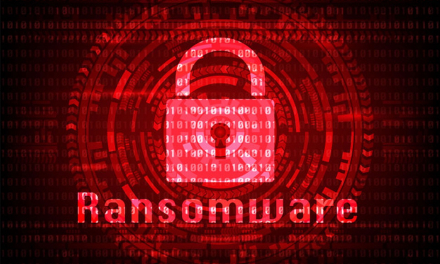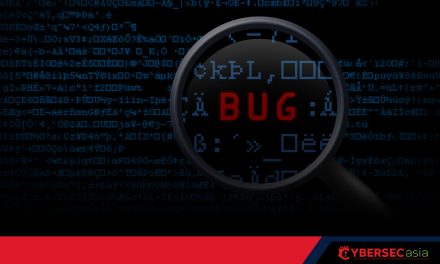Organizations using more than one data protection vendor were almost four times more vulnerable to a cyber incident.
Organizations in the Asia Pacific and Japan regions (APJ) on average are managing 64% more data than they were a year ago. With this surge in data comes inherent challenges.
In a recent global data protection survey, 77% of respondents reported their current data protection solutions will not meet all of their future business needs. The APJ regional findings also showed positive progress as an increasing number of organizations—75% in 2019, up from 74% in 2018—saw their data as valuable and are currently extracting value or plan to in the future.
The Dell Technologies Global Data Protection Index 2020 Snapshot also revealed that organizations in APJ are now managing 13.31 petabytes (PB) of data, a 64% increase since the average 8.13PB in 2018, and a 693% increase since organizations were managing 1.68PB in 2016.
The largest threat to all this data seems to be the growing number of disruptive events, from cyber-attacks to data loss to systems downtime. The majority of organizations (84% in 2019 compared to 80% in 2018) had suffered a disruptive event in the last 12 months. An additional 70% feared their organization may experience a disruptive event in the next 12 months.
Costly disruptions rise at alarming rates
Of great concern was the finding that organizations using more than one data protection vendor were almost four times more vulnerable to a cyber incident that prevents access to their data (42% of those using two or more vendors versus 11% of those using only one vendor). But, the use of multiple data protection vendors is on the rise with 83% of organizations choosing to deploy data protection solutions from two or more providers, up 25 percentage points since 2016.
The cost of disruption was also surveyed to be increasing at an alarming rate. The average cost of downtime in the last 12 months studied had surged by 61% from 2018 to 2019, resulting in an estimated total cost of US$794,308 in 2019, up from US$494,869 in 2018.

The estimated cost of data loss had also increased from US$939,703 in 2018 to US$1,301,524 in 2019 on average. These costs were significantly higher for those organizations using more than one data protection vendor—nearly four times higher downtime-related costs and almost 12 times higher data loss costs, on average.
Said Alex Lei, vice president, Data Protection Solutions, Asia Pacific & Japan, Dell Technologies: “The exponential data growth combined with increasing data value is creating opportunities but also new risks as organizations grapple with how to reliably and sustainably protect their information. As the value of an enterprise’s data increases, the cost of data loss increases substantially.”
Lei said that in 2020 and beyond, organizations that leverage comprehensive data management and protection capabilities across their multi-platform and multi-cloud environments, “will be prepared to effectively mitigate emerging risks, accelerate innovation, reduce Total Cost of Ownership (TCO) and optimize business outcomes.”
Data protection solutions overstretched
As emerging technologies continue to advance and shape the digital landscape, organizations are learning how to use these technologies for better business outcomes. The study reports that almost all APJ respondents’ organizations were making some level of investment in newer or emerging technologies, with the top five being: cloud-native applications (64%); Software-as-a-Service (SaaS) applications (58%); AI and machine learning (50%); 5G and cloud edge infrastructure (49%); and Internet of Things/end point (45%).
Yet, three-quarters (75%) of respondents believed these emerging technologies create more data protection complexity while 72% stated that emerging technologies pose a risk to data protection.
More than half of those using newer or emerging technologies were struggling to find adequate data protection solutions for these technologies, including:
- 5G and cloud edge infrastructure (75%)
- AI and ML platforms (72%)
- Cloud-native applications (64%)
- IoT and end point (59%)
- Robotic Process Automation (56%)
The study also found that 77% of respondents believe their organizations’ existing data protection solutions will not be able to meet all future business challenges. Respondents shared a lack of confidence in the following areas:
- Recovering data from cyberattacks (70%)
- Recovering data from a data loss incident (66%)
- Compliance with regional data governance regulations (65%)
- Meeting backup and recovery service level objectives (60%)
Data protection goes cloud-native
Businesses were taking a combination of cloud approaches when deploying new business applications and protecting workloads such as containers and cloud-native and SaaS applications.
The findings show that APJ respondents’ organizations preferred public cloud/SaaS (46%), hybrid cloud (38%) and private cloud (36%) as deployment environments for newer applications such as these. Also, 76% of organizations surveyed said it was mandatory or extremely important for data protection providers to protect cloud-native applications.
As more data moves to, through and around edge environments, many respondents said cloud-based backups were preferred, with 60% citing private cloud and 59% citing public cloud as their approach for managing and protecting data created in edge locations.
According to Beth Phalen, president, Dell Technologies Data Protection: “These findings prove that data protection needs to be central to a company’s business strategy. As the data landscape grows more complex, organizations need nimble, sustainable data protection strategies that can scale in a multi-platform, multi-cloud world.”

















